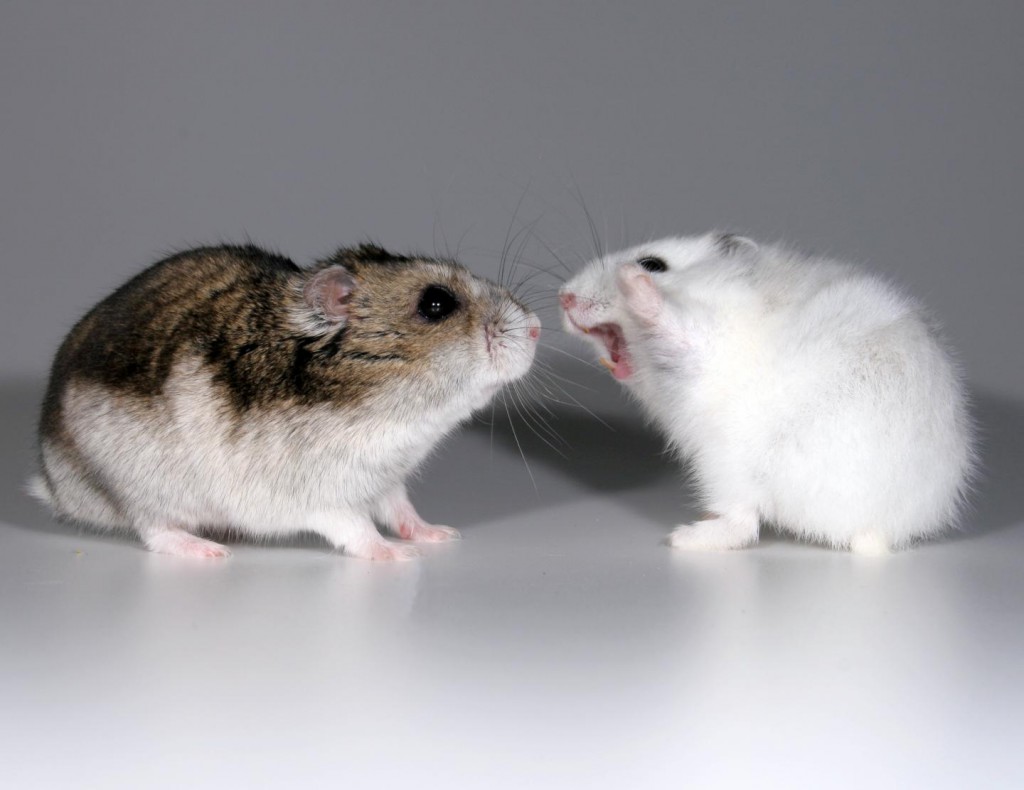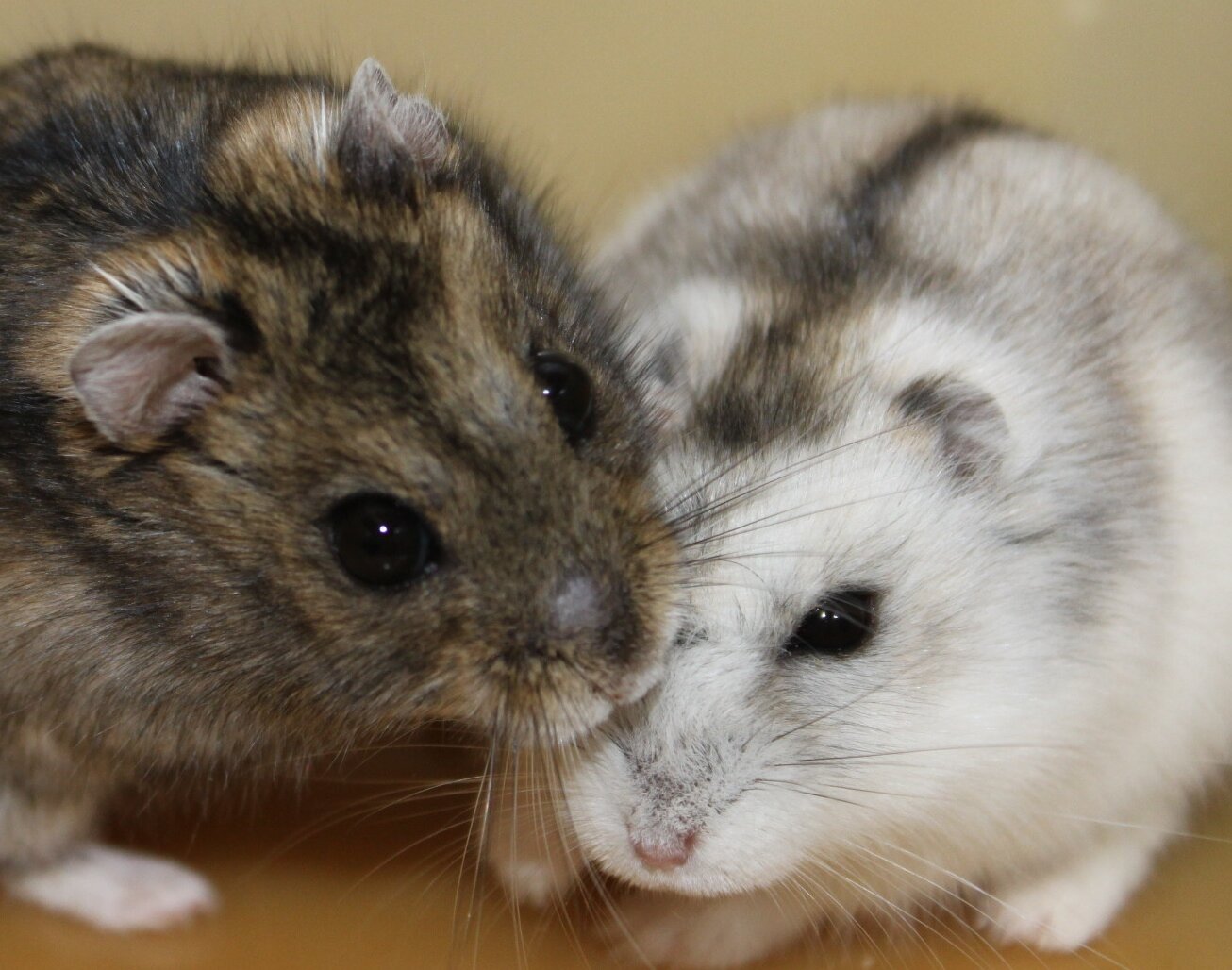When you’re diving into the world of hamster breeding, the first hurdle you need to clear is pairing the right hamsters, and this crucially begins with species compatibility. Here, we’re not calling for a simple match-up based on friendly demeanor or fur color. It’s all about biology and behavior.
Crossbreeding in the animal kingdom can be complex and often ill-advised, more so in hamsters. For instance, imagine trying to pair a Syrian with a dwarf hamster. Not only is it genetically incompatible, but their behavioral differences are also like mixing oil with water. They just don’t mix well.
Syrian hamsters are lone wolves of the hamster world, notoriously territorial and prefer solo living arrangements after a tender age. On the other hand, dwarf varieties such as the Campbell’s, Winter White, or Roborovskis can be more sociable. Breeding across these lines doesn’t just potentially harm the animals involved; it’s likely to be unproductive.
Now, to ensure you’re matching suitable partners for breeding, distinguish between the types. Syrians, with their larger, cuddly size and solitary lifestyle, must mate with other Syrians. For dwarf hamsters, sticking to the same species ensures the safety and wellbeing of the potential offspring. That’s because the offspring need to inherit characteristics that will not harm them physically or detrimentally affect their future social interactions.
Remember, successful hamster breeding is not about taking chances. It’s about informed decisions and responsible pet ownership, setting the stage for healthy pups and happy, stress-free parents. Next, we’re going to transition into another critical aspect of responsible breeding: ensuring your hamsters are not just compatible but also healthy and primed for parenthood.
Selecting Healthy Partners: The Key to Successful Hamster Breeding
If you’re looking to dive into the world of hamster breeding, ensuring the health of your hamster pair is absolutely crucial. A healthy breeding pair is more likely to result in a successful litter and reduce potential health risks for both the parents and their pups. Now, let’s pinpoint what to look out for when selecting your furry companions for breeding.
First up, the hallmarks of a healthy hamster are quite clear: bright, alert eyes; clean, well-groomed fur; and a level of activity that indicates vitality. These should be your non-negotiables. Hamsters that exhibit any signs of illness, such as lethargy, discharge from the eyes or nose, or unkempt fur, should be excluded from your breeding program.
Genetics, too, play a significant role. Opt for hamsters that come from a lineage with a clean bill of health. This means reaching out to reputable breeders who can provide the history of the hamsters they’re selling. It’s not enough to have healthy-looking hamsters; knowing there’s a strong genetic foundation free from hereditary diseases is half the battle won.
While choosing breeding-ready hamsters, steer clear of any that show potential genetic defects. These could manifest physically or behaviorally and might not always be obvious. So, it pays to do your homework and know what to watch out for.
Now, healthy hamster breeding is more than just selecting robust-looking parents. It’s about managing the entire breeding process responsibly, which leads us smoothly into considering the appropriate age and maturity for breeding, which I’ll cover in the next section.
Assessing Age and Maturity: When Are Hamsters Ready for Breeding?
I’m going to let you in on a little secret: timing is everything in the world of hamster breeding. It’s not simply about choosing any adult hamsters and expecting baby hamsters to pop out. You’ve got to pay attention to the age and maturity of potential parents. Now, female hamsters usually hit the breeding sweet spot between 4-6 months of age, while males are generally ready to tango at about 6 months. Why this range, you ask? Well, breeding hamsters that are too young can lead to complications, both for the mother and the pups, and if they’re too old, fertility issues might arise.
Selecting hamsters that are at the prime of their fertility isn’t just a happy coincidence, it’s a calculated decision. Breeding requires energy and good health, which peak during these specific months. Remember, your ultimate goal here is to ensure the health of both the parents and the resulting offspring.
Here’s where the action plan kicks in. If you want to breed hamsters successfully, keep an eye out for those that are physically mature, with fully developed bodies, yet still youthful enough to endure the breeding cycle. Observe their behavior as well – it’s a big clue to maturity. Look for females that demonstrate typical estrus behaviors, like tail-raising when stroked along the back. Males, on the other hand, will start to show interest in the opposite sex and might even become a little territorial.
With these considerations in mind, you’re going to want to make sure that the stage is set for the next crucial part: matching your hamsters based on their behavior and temperament. Nailing the age aspect is a victory for sure, but if you overlook the personality traits, you may be setting the stage for a rocky romance. Let’s move forward and talk about how you can select hammies not just ready for breeding, but also likely to get along like a house on fire.

Behavior and Temperament Considerations in Breeding Hamsters
Choosing the right hamster pair for breeding isn’t just about their physical health; it’s also about their psychological well-being. A hamster’s behavior and temperament are crucial factors to consider when selecting a breeding pair.
Aggressive hamsters can be problematic. Not only can aggression lead to injury during mating, but these traits can also be inherited by the pups. Conversely, overly timid hamsters might have trouble with the mating process or later, as parents, might not adequately care for their litter. Balancing temperament to ensure both partners are neither too aggressive nor overly shy is vital in breeding hamsters.
Observe the hamsters you’re considering for breeding and look for those with a calm and friendly demeanor. These characteristics can make the breeding process go more smoothly and will likely be passed down to the offspring, making them better pets. Additionally, hamsters that are well-socialized and used to human interaction are preferable.
Remember, the goal is not only to breed but to also propagate healthy behavioral traits that will be beneficial for any future hamster caretakers. By prioritizing a gentle temperament, you can help ensure the young hamsters will be less stressed and easier to handle.
Transitioning to the next consideration, let’s discuss how the lineage and environment play a significant role in the lives of breeding hamsters. Understanding the background of the hamsters you’re breeding is just as important as the environment you’ll provide for the expecting pair and their offspring.
Ensuring a Healthy Legacy: Post-Mating Care and Observation
After the careful selection of the right hamster pair for breeding and providing them with the ideal environment, it’s crucial to focus on the post-mating phase, which is just as important for the well-being of the mother and the litter. Separate the female from the male immediately after mating to prevent any possible stress or aggression that could harm her or the pups.
You want to provide the expectant mother with a sanctuary, a place where she can nest, rest, and raise her pups in peace. This area should be quiet, away from high traffic and excessive noise, ensuring she has the tranquility necessary for a healthy gestation period.
Keep an eye on the mother’s health, watching for any signs of distress or complications. Remember, your vigilance here pays off in the long run, as it helps to ensure the birth of healthy pups and a quick recovery for the mother.
Proper nutrition remains paramount during this phase. Continue giving the mother a balanced diet rich in the nutrients she needs to nurse her pups. High-quality hamster pellets, fresh vegetables, and the right protein sources will support her through nursing and help the pups grow strong and healthy.
In my opinion, successful hamster breeding isn’t just about the pairing process; it’s about the continuous care and attention you provide throughout every stage. Keep detailed records of the breeding, health, and growth of the litter. This information can be invaluable for future breeding and for anyone else involved in the care of these delightful creatures.
I really hope that you’ve gleaned valuable insights from this guide on choosing the right hamster pair for breeding. Don’t worry too much if things don’t go perfectly the first time around. Breeding hamsters is a learning process, and you can always adjust your approach down the road. Good luck, and may your attention to detail pave the path for many healthy and happy hamster generations to come.
Down below I put an interesting video for you to watch:


2 replies on “Choosing The Right Hamster Pair For Breeding”
Hi there
I found your article quite informative and engaging. It offers valuable insights into the considerations one should keep in mind when embarking on the journey of breeding hamsters, emphasizing the importance of health, genetics, and temperament in selecting compatible pairs.
The step-by-step guide provides novice breeders with a comprehensive roadmap, ensuring the well-being of both the parent hamsters and their offspring.
However, I’m curious, does the article delve deeper into the ethical considerations surrounding hamster breeding and emphasize the responsibility breeders have in ensuring the welfare of these animals?
Hey Troy,
Thank you for your kind words about the article! The well-being of both the parent hamsters and their offspring is indeed a top priority, and it’s great to hear that the step-by-step guide provided a comprehensive roadmap for novice breeders.
Regarding your question about ethical considerations, the article does touch on some fundamental aspects, but I’d be happy to elaborate further.
Ethical considerations are crucial when it comes to breeding hamsters, and responsible breeders should always prioritize the health and welfare of the animals. Here are some key ethical points to consider:
Avoid Overbreeding: Overbreeding can lead to health issues and a lack of resources for proper care. It’s essential to plan litters carefully and ensure that you can provide for all the hamsters adequately.Health Screening: Breeders have a responsibility to ensure that their hamsters are healthy and free from genetic conditions that could be passed on to offspring. Regular veterinary check-ups and genetic testing can help in this regard.Finding Good Homes: Ensuring that the offspring go to good homes where they will be well cared for is paramount. Potential owners should be screened to ensure they are prepared for the responsibilities of hamster care.Lifelong Commitment: Breeders should be prepared to take back any hamster they’ve bred if the new owner can no longer care for it. This helps prevent hamsters from ending up in shelters or being neglected.Education: Breeders should educate new owners about proper hamster care, including diet, habitat, and health needs, to ensure the well-being of the hamsters throughout their lives.
By focusing on these ethical considerations, breeders can contribute to the well-being of hamsters and promote responsible pet ownership. If you have any more questions or need further information, feel free to reach out!